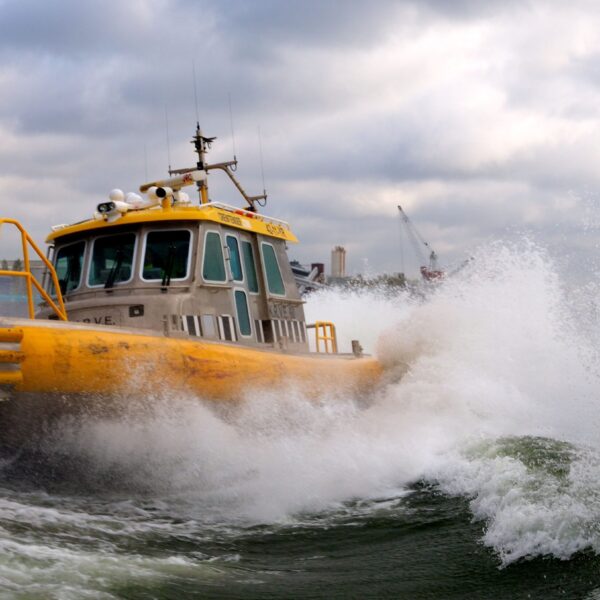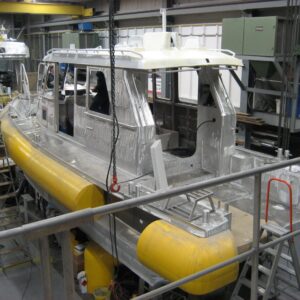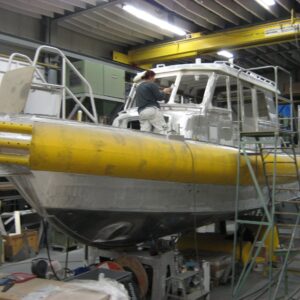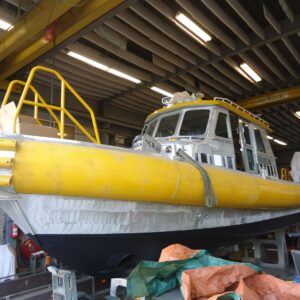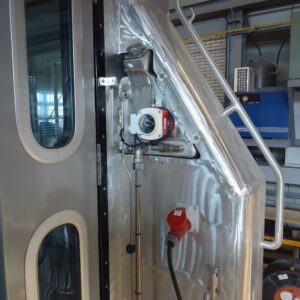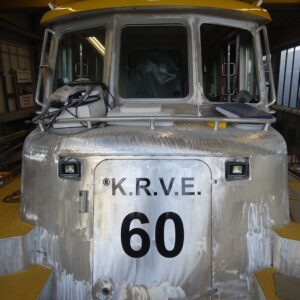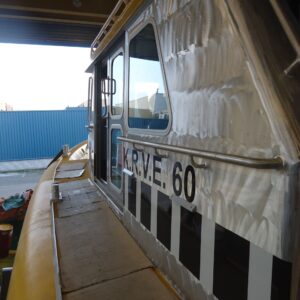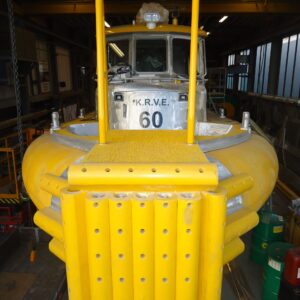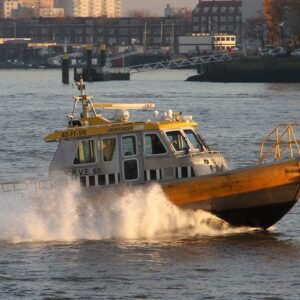BN186 Crewtender KRVE60
A robust and proven aluminium Crewtender, for the transportation of crew, pilots and personal.
A deep V hull and reinforced fender, closed main deck and closed wheelhouse.
This proven concept of crewtendering does already years of dependable service in the Port of Rotterdam, ships are used to transport pilots and staff with a average of 4,000 hours a year per boat. At the moment there are five Crewtenders under the flag of the KRVE . This RIB has been specifically designed for the rough and tumble of the Rotterdam harbours and is, soldierproof.
Each Crewtender makes something in the region of 100 ‘controlled collisions per day” as it delivers or collects pilots and other crew members. The fender therefore has to act as a shock absorber/fender, and resist collisions with sharp objects such as broken ladders, or steel bolts or pieces of reinforced concrete, as well as acting as a buoyancy aid to ensure that the vessel remains afloat even if completely full of water. Poly-Marine services, a company specialising in these sorts of problems, therefore developed a special fender for the boat. Using their offshore experience they have produced a fender with a hard exterior but filled with foam. This formula appears to work – tests have included driving a fork-lift truck hard into the tube but it remained fully functional. The ship can therefore be pushed head first or sideways against another surface with no dangerous results. In order to maximise the safe transfer of passengers, the boat has a warmed and fenced platform in the bow. With the nose of the boat pressed against the receiving vessel, crew members can step safely from one vessel to another (or from the Crewtender onto dry land). The main engine is a John Deere 12.5 litre 6125SFM75 delivering 455kw. The engine drives the waterjet and a number of hydraulic pumps for the air conditioning, water pumps, bow thrusters and a 10KVA generator. The complete hydraulic system has been developed by Hydromarine in Papendrecht while the vessel has been designed by the Willem de Vries-Lentsch marine architects office, who also designed the family of aluminium RIB lifeboats for the KNRM (Valentijn, Arie Visser)
Specifications:
Length o.a.: 10.50 m
Length aluminium hull: 8.95 m
Length cwl.: 7.80 m
Beam overall, incl. tube: 3.94 m
Beam Hull: 3.10 m
Draft at cwl: 0.70 m
Draft fully loaded: 0.75 m
Weight fully loaded: 9400 kg
Speed under trial conditions: 32 knots
Material: Aluminium H321
Range at full power: 6 hrs
Crew: 1 pers.
Fuel capacity: 560 ltr.
Engines: 1x John Deere 6125SFM75, 455 kW at 2100 r.p.m
Reduction: 1x ZF350
Waterjets: 1x Rolls Rocye Kamewa FF410

